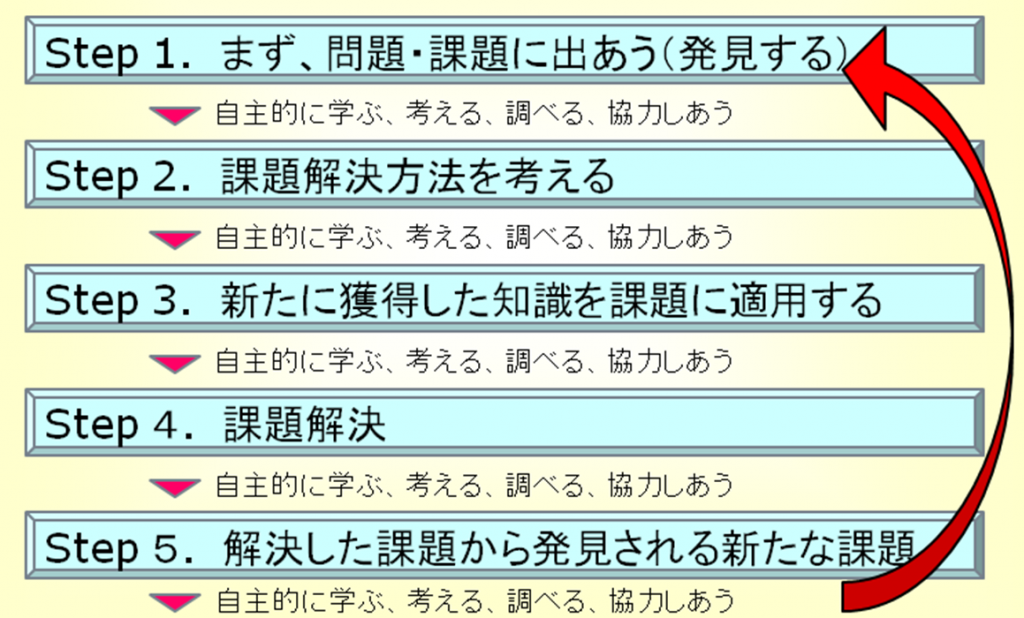The important thing in AL is how students can face new challenges and actively strive to overcome them (Chart 4).At that time, the role that the teacher should play will be to point out problems / problems that the students themselves are not aware of and to help them solve them.

Chart 4: Problem-solving learning process in AL
Basanti Majunda Keiko Takeo (2004) Created by the author based on "PBL Recommendation" (Gakken Marketing)
Then, what kind of challenges will university students face, especially in industry-academia collaborative AL?In my experience, there are countless answers.For example, the quality of the idea of the proposed project may be a problem, and the basis of the proposal may not be well-founded and it may be difficult.When working as a team, it may not be possible to collide with each other, or the motivation within the team may not be high.To put it in a more rudimentary way, some teams are unable to manage their time or have poor schedule management.Some participants may not know how to send an email or have no presentation technique.At a high level, there are times when you can't set goals as you want, or when you're worried about choices and prioritization.In the case of college students, it is difficult to say that what they are saying does not match what they actually do, and some people give up immediately when faced with a little difficulty.
At AL, it is important how to confront the students with these issues and problems, give hints to overcome them, and how much effort the students can make.As a result, AL will be a great success if the students themselves can find their own tasks on their own.
In order to create a problem-finding / solving type AL where a one-way passive lecture style is sufficient for mere transfer of knowledge, the teacher's own independent and active involvement is indispensable.In fact, in order to carry out the above-mentioned industry-academia collaborative AL, it is often necessary for the author to exchange an average of 20 to 30 or more emails every day.From this, in order to succeed in problem-solving industry-academia collaborative lectures by active learning, it depends on how the instructor himself can point out the problems of the students with their own sexual roots and give guidance to overcome them. It can be said that there is.
Reference: Click here for the contents of Professor Sakata's project ⇒ Chukyo University Faculty of Policy Management Takafumi Sakata Seminar Homepage
